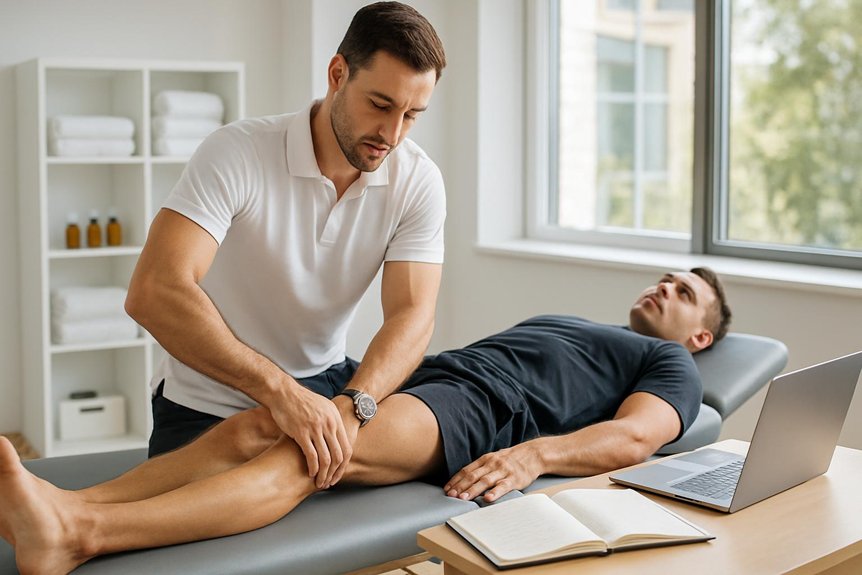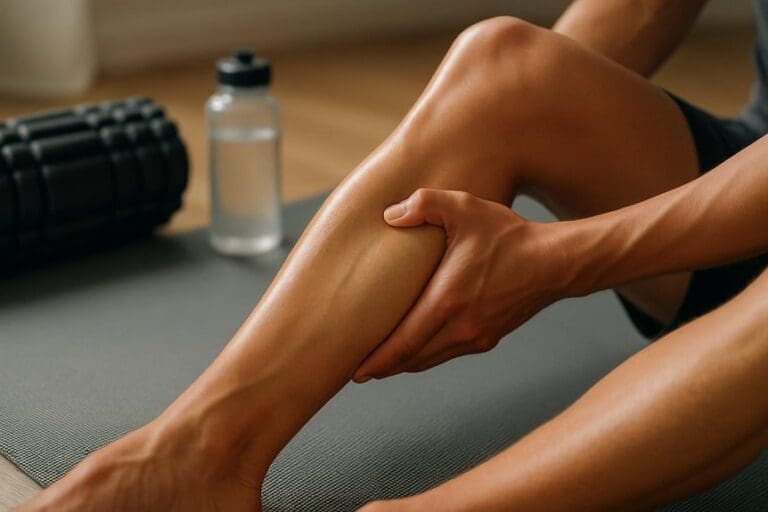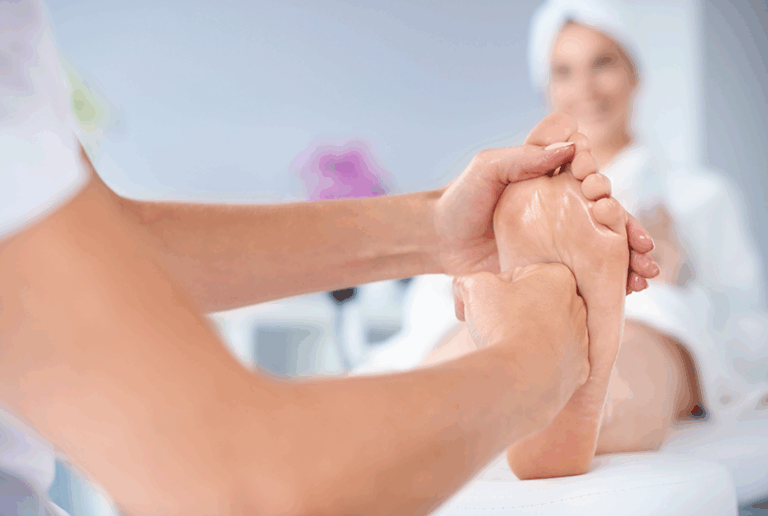In the UK, athletic massage therapists typically earn £24,000–£35,000 in employed roles and £30,000–£45,000 gross when self‑employed. Hourly billable rates usually range £45–£75, rising with experience, specialist certifications, and strong client outcomes. London rates are about 10–25% higher, though costs also rise. Income varies by location, season, utilisation, and pay model (employed, self‑employed, mobile). Typical schedules involve 20–28 hands‑on hours over 4–5 days, with evenings/weekends boosting earnings. There are also tips, add‑ons, bundles, and growth paths worth exploring.
Average Earnings for Athletic Massage Therapists in the UK
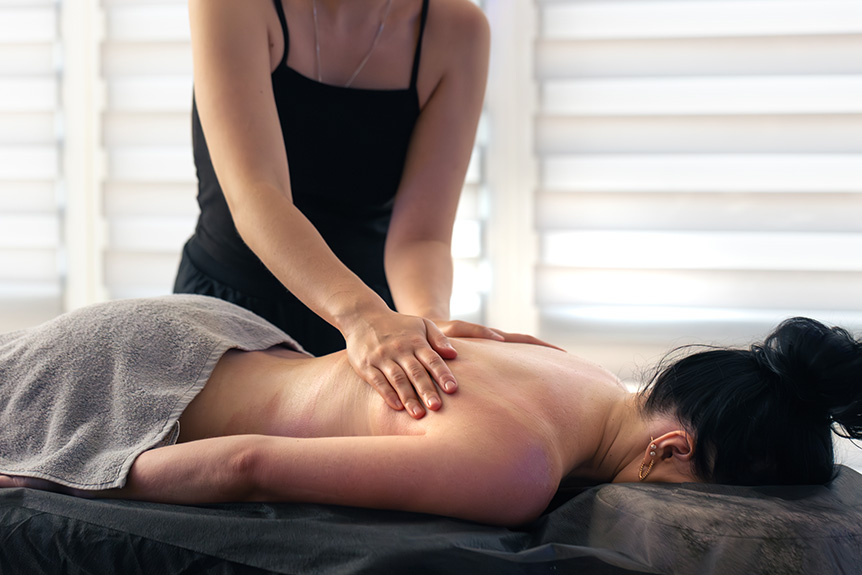
How much do athletic massage therapists typically earn in the UK? Current industry data places typical annual earnings around £24,000–£35,000 for employed therapists, with London-based roles often at the upper end due to higher session fees and demand.
Self-employed therapists commonly report gross incomes of £30,000–£45,000 when maintaining steady weekly bookings; those running busy clinics can exceed this range.
At Spa & Massage’s London clinics, session rates and consistent client flow support competitive take-home pay through well-structured schedules and repeat bookings.
Typical hourly billable rates for athletic massage range from £45–£75, depending on appointment length and location.
While headline figures reflect gross income, therapists also account for tax and professional costs.
Transparent pricing, reliable systems, and clinical support help stabilise earnings and sustain long-term practice.
Therapists who expand their services to include aromatherapy massage techniques may further increase their earning potential by appealing to a broader client base.
Factors That Influence Income in Sports Massage
Income in athletic massage is shaped by location and demand, with high-footfall areas like central London typically supporting higher rates and fuller schedules.
Earnings also rise with experience and accredited training, as advanced skills justify premium pricing and foster client retention—an approach our Spa & Massage clinics observe across teams.
Finally, employment model matters: salaried clinic roles offer stability and benefits, while self-employment or room rental can increase upside but adds cost and marketing responsibility.
Location and Demand
Where practitioners work—and who needs their skills—largely determines earning potential in athletic massage. Urban centres with dense athletic communities, frequent events, and higher disposable incomes usually support higher rates and fuller schedules.
In London, neighbourhoods with active gyms, running clubs, and team sports reliably generate demand; proximity to transport links also raises booking consistency.
Local seasonality matters. Marathon build-up periods, triathlon season, and winter team fixtures can intensify weekly throughput.
Contracting with clubs or studios stabilises volume, while on-call event work adds premium fees.
At Spa & Massage clinics across Crouch End, Bayswater, Chiswick, Earl’s Court, Belsize Park, and Richmond, therapists benefit from steady, sports-focused footfall and established referral patterns.
Consistent demand enables predictable rosters, competitive rates, and additional income from extended hours when peak periods arise.
Experience and Training
Why does experience so reliably raise earnings in athletic massage? Because outcomes improve. Seasoned therapists assess faster, tailor pressure with precision, and manage complex presentations—qualities clients and teams value and will pay for.
With each year, rebooking rates, word‑of‑mouth referrals, and case efficiency rise, lifting hourly revenue and total billable hours.
Training compounds this effect. Advanced certifications in injury rehabilitation, myofascial techniques, and event support justify higher fees and broaden the client mix to include athletes needing targeted care.
At Spa & Massage, therapists progress through structured CPD, supervised skills labs, and evidence‑led protocols; those with specialist credentials typically command premium pricing and fuller schedules.
Experience also reduces downtime—fewer treatment errors, clearer boundaries, better pacing—sustaining more appointments per shift without sacrificing safety or the quiet, attentive presence clients seek.
Employment Model Choices
Although skills set the ceiling, the employment model often determines day‑to‑day earnings, volatility, and workload for athletic massage therapists. Salaried roles offer predictable income, benefits, and admin support, but lower upside.
Commission or hourly contracts increase per‑session pay with partial stability; earnings hinge on booking density. Self‑employment (room rental or mobile) maximises rate retention, yet adds marketing costs, unpaid gaps, insurance, and tax planning.
In Spa & Massage clinics across London, therapists typically benefit from steady client flow, reception support, and structured pricing—reducing empty time and payment risk. Hybrid arrangements—fixed base plus commission—balance security and incentive.
Evidence from industry surveys shows utilisation rate, rebooking, and cancellation policies drive income as much as headline rates. Consistent outcomes, punctuality, and aftercare guidance sustain repeat demand.
Pay Structures: Employed Vs Self-Employed Vs Mobile
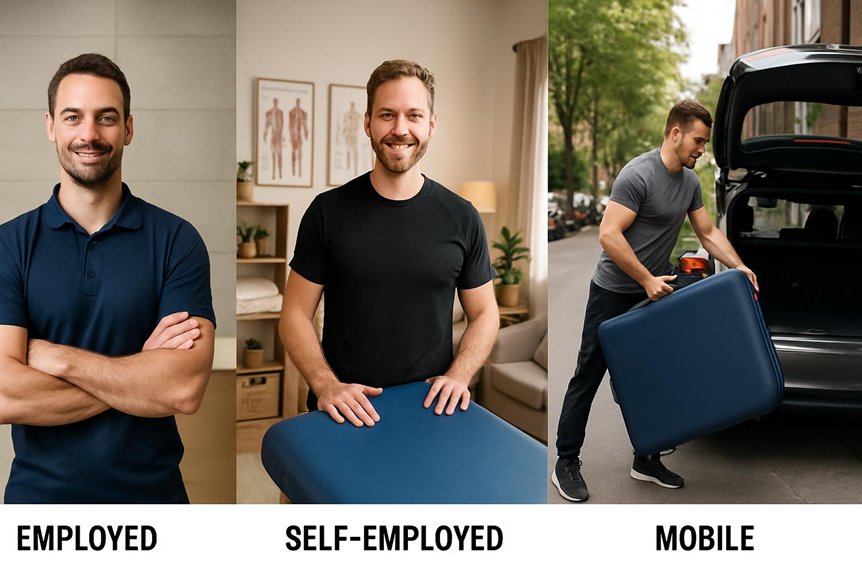
Even before comparing headline rates, understanding how pay is structured—employed, self‑employed, or mobile—shapes a athletic massage therapist’s real earnings, stability, and workload.
Employed roles typically offer fixed hourly pay, paid leave, training, and steady bookings. Net income is predictable, though the clinic retains a margin; at Spa & Massage, this model supports consistency, mentorship, and clear progression.
Self‑employed therapists may rent a room or accept per‑treatment splits. Gross rates are higher, but they cover insurance, supplies, taxes, and downtime. Earnings hinge on marketing, repeat clients, and schedule optimisation.
Mobile therapists set their own fees and add travel premiums. After fuel, time between clients, and equipment wear, effective hourly rates vary widely. Many blend models—anchoring clinic days while accepting selective mobile or freelance sessions.
London Pay Premium and Cost-of-Living Considerations
Athletic massage therapists in London typically command a wage premium versus regional averages, reflecting stronger demand and higher client volumes. However, elevated living costs—rent, transport, and professional expenses—can erode net take-home pay, so headline rates may not translate into higher disposable income.
From Spa & Massage’s perspective, therapists weighing London roles should assess real earnings after costs and consider stable clinic-based caseloads that support consistent income.
London Wage Premium
Many athletic massage therapists in London command a wage premium compared with regional averages, reflecting higher client demand, longer operating hours, and the city’s elevated cost of living.
Market surveys commonly show London rates 10–25% above national baselines, with additional uplifts for advanced qualifications, event support, and peak-time availability.
Clinics with established reputations and steady client flow can sustain higher hourly earnings while maintaining predictable schedules.
From Spa & Massage’s perspective, consistent caseloads across Crouch End, Bayswater, Chiswick, Earl’s Court, Belsize Park, and Richmond support competitive pay structures tied to skill mix, client rebooking, and clinical outcomes.
Therapists with strong assessment skills, injury management experience, and refined pressure control typically command higher rates.
Clear communication, punctuality, and evidence-based treatment planning further enhance earning potential through client loyalty and referrals.
Living Costs Impact
While London pay for athletic massage therapists typically exceeds national averages, higher earnings are tempered by the capital’s elevated living costs—rent, transport, and insurance foremost among them.
Council tax, professional indemnity premiums, and CPD expenses further narrow take‑home pay. Commuting across Zones 1–3 and room hire rates materially affect net margins for employed and self‑employed therapists alike.
From Spa & Massage’s perspective, sustainable income in London comes from careful scheduling, stable client retention, and smart location choices. Clinics situated in Crouch End, Bayswater, Chiswick, Earl’s Court, Belsize Park, and Richmond balance footfall with manageable overheads.
Therapists who optimise peak-time bookings, maintain consistent treatment quality, and use evidence-based aftercare protocols typically offset higher costs. Transparent pay structures, reliable shifts, and supportive supervision help convert the London premium into predictable earnings.
Income by Experience Level and Qualifications
Because earnings scale with capability and credentials, income for athletic massage therapists typically rises with experience, specialist training, and recognised qualifications. Entry-level practitioners with foundational Level 3–4 certifications often earn lower hourly rates and rely on supervision while building confidence and a client base.
Mid-career therapists holding advanced diplomas, taping or myofascial certifications, and CPD in injury management generally command higher fees and improved booking consistency.
Senior clinicians with Level 5+ qualifications, proven outcomes with athletes, and referral networks secure premium rates, longer sessions, and post-event recovery work.
Within Spa & Massage clinics in London, observed trends reflect this ladder: therapists who invest in CPD, maintain professional memberships, and document measurable client progress are favoured by loyal clients, which translates to stronger utilisation and higher annual earnings.
Typical Weekly Schedules and How They Impact Take-Home Pay
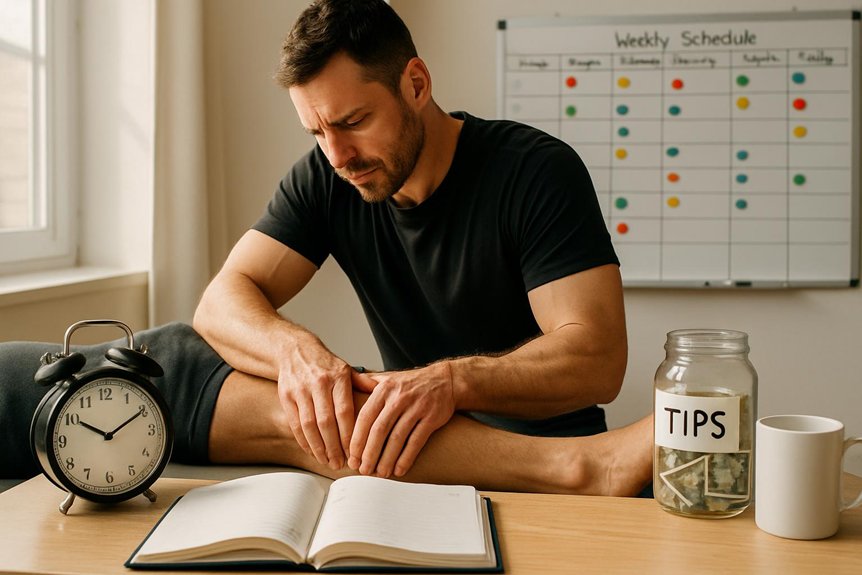
Although individual patterns vary by setting, a athletic massage therapist’s weekly schedule typically blends peak client hours with protected recovery and admin time, and this mix directly influences take‑home pay. Evenings and weekends are prime demand in London; clinicians who open those slots usually capture higher utilisation and better tips, while maintaining two lighter weekdays for rest and notes.
A sustainable caseload is often 20–28 hands‑on hours across 4–5 days; beyond this, fatigue risks cancellations and reduced rebooking.
At Spa & Massage, therapists cluster 60–90 minute sports sessions around commuter windows, buffer 15 minutes for charting, and block midday recovery to preserve pressure quality. Consistent punctuality, minimal gaps, and pre‑planned follow‑ups increase rebook rates and reduce unpaid downtime, stabilising weekly earnings.
Additional Revenue Streams: Tips, Add-Ons, and Packages
Beyond base session fees, additional revenue for athletic massage therapists often comes from client tips, targeted add-ons, and pre-paid packages that enhance utilisation and predictability.
In Spa & Massage clinics across London, discretionary tips typically range from 5–15% and tend to rise with consistent outcomes, punctuality, and clear aftercare.
High-value add-ons include focused cupping for stubborn fascial tightness, percussive therapy for recovery days, and stretching blocks appended to 60-minute sessions; these are priced transparently and recommended only when clinically relevant.
Pre-paid packages—such as 5- or 10-session bundles—steady booking patterns and reduce cancellations, improving occupancy and net earnings.
Data from our clinics show bundled clients rebook faster and adhere to treatment plans.
Therapists also increase basket size with recovery plans, taping, and personalised at-home routines.
Career Progression and Long-Term Earning Potential
Over a 5–10 year horizon, athletic massage therapists can increase earnings by advancing clinical skills, optimising caseload mix, and assuming leadership roles.
Evidence suggests higher fees correlate with post-graduate certifications (e.g., sports rehab, myofascial techniques), consistent outcomes, and referral density from coaches and clinicians.
Caseloads weighted toward performance clients, complex cases, and post-event recovery typically command premium rates.
At Spa & Massage in London, senior therapists often progress into mentorship, CPD leadership, and clinic coordination, adding salaried stability to session income.
Building a niche—return-to-play protocols, endurance events, or pregnancy-safe sports care—further elevates demand.
Long term, therapists leverage retainers with teams, corporate wellness days, and small-group recovery sessions.
Select therapists move into multi-site leadership, education, or protocol development, increasing total compensation and career resilience.
Conclusion
In summary, athletic massage earnings vary with location, experience, and work model, but disciplined scheduling and client retention drive stability. Significantly, repeat clients account for up to 60–70% of revenue in established practices, underscoring the value of consistent outcomes and service quality. Whether employed, self-employed, or mobile, therapists who invest in advanced qualifications, smart pricing, and add-ons can outperform averages. Understanding demand cycles and London’s premium—tempered by higher costs—helps therapists plan sustainable, growth-oriented careers.
